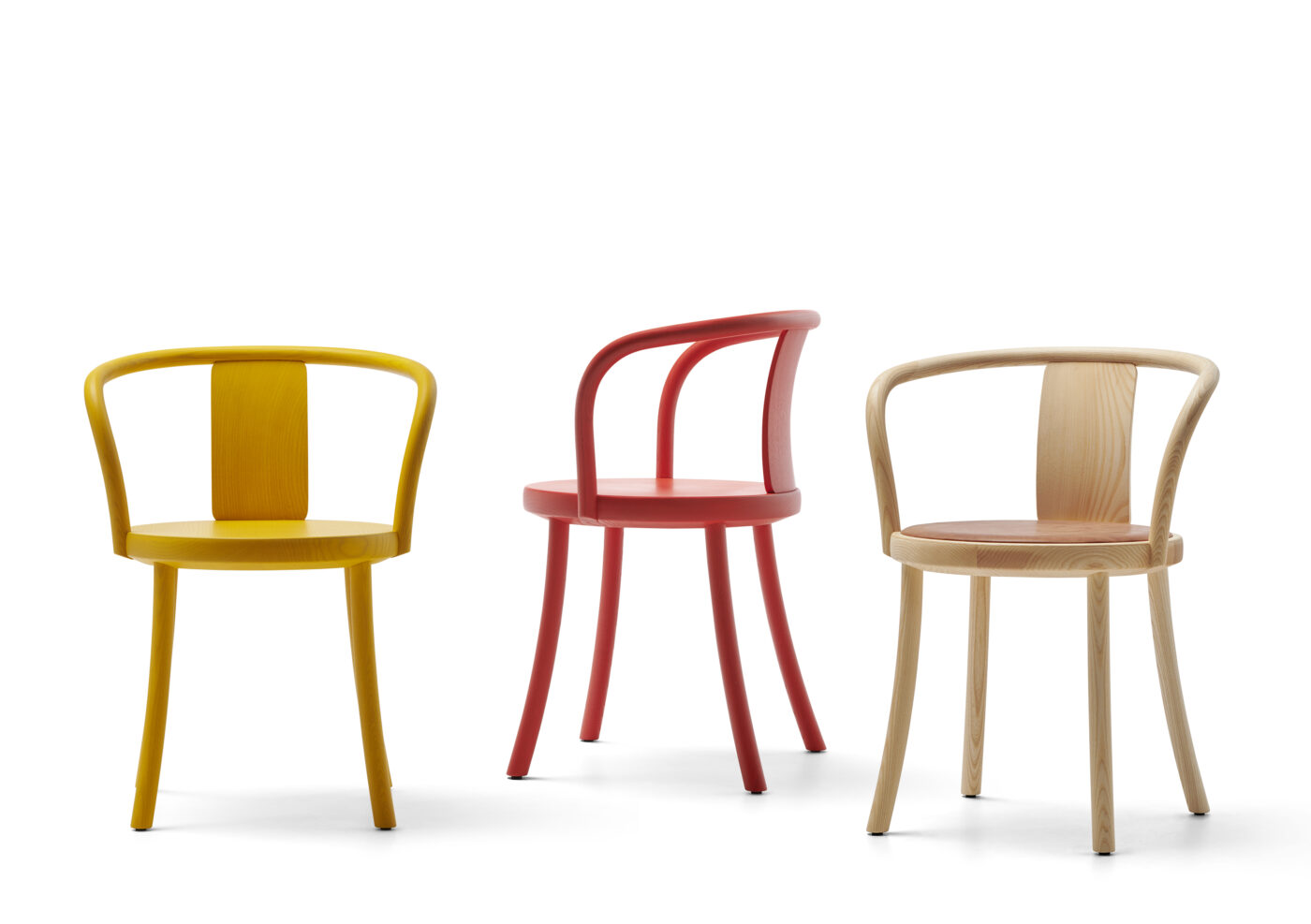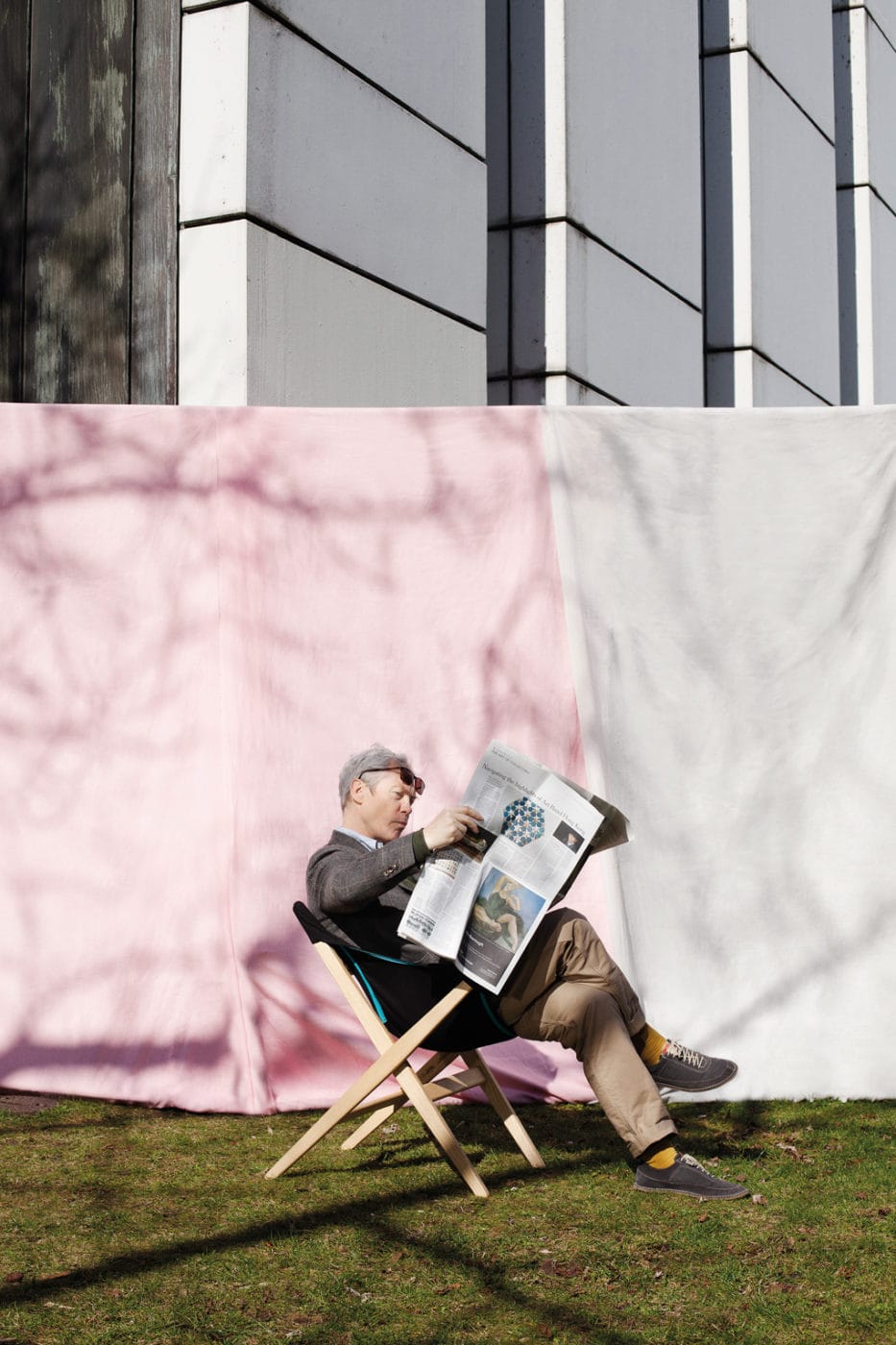
2023 / MC18 — ZAMPA ARMCHAIR
BY JASPER MORRISON
The interview
Konstantin Grcic: ZAMPA started with a simple stool … then came a chair and now an armchair. It would not be unusual to design all three models at the same time – but it wasn’t like that. You designed one piece after the other. Is the slowness the strength of these designs… That they had time to evolve, one at a time and building on each other?
Jasper Morrison: What I love about the Zampa family is that it all happened in the opposite order. Normally you’d start with the chair or the armchair and the stools would be the add on to complete the family. If Mattiazzi had asked for an armchair first there’s no way it would have looked anything like it does. But they asked for a stool and nothing else, so I was able to focus on achieving something quite simple and essential, before continuing a year later to convert it into a chair, and another year on to add the armchair, and after that the request came for an upholstered seat. The order and the slowness both played their part in the design.
KG: For the new design, you could have simply attached armrests to the chair. Instead, you decided to make it a purebred armchair that claims a certain independence from the other ZAMPA models. Your designs are always characterised by a mental clarity. How much searching and pondering precedes this clarity?
JM: You might have forgotten your instructions at the start of the project: to scale the armchair up, and give it a bit more importance. Another thing that comes to mind is Rolf Fehlbaum (Vitra’s Chairman) telling me that Charles Eames told him that the most difficult thing to design is an armrest, and I would agree with that, even more difficult if you’re adding it to a previously designed chair. But as usual we started by trying to do just that, and as usual something was not right about it, it didn’t look natural no matter how many adjustments we made. When you get to that point you have two options, to keep on the same path most likely heading for thicker and thicker jungle or to turn off the path on what might at first seem a less reliable track. That has a freeing effect for the project because suddenly all options are open again. Never mind that the armchair has its own character, I think it makes a collection richer to have these differences. I find the searching and pondering phase the most enjoyable. You know the design is there somewhere, it’s a question of finding it. Sometimes it’s quick and sometimes it’s not, luckily we are not under pressure to work as fast as other design disciplines.
KG: The new armchair is made in ash, but it also comes in a number of colours. What is your attitude to the material and colour of your products? Do you follow a strict vision, or are you rather easy going about the subject?
JM: On a scale of 1 to 10 I’m probably a 9 pretending to be a 6. There are colours and finishes that I can’t stand but I realise it’s foolish to imagine you have all the answers for everyone so I try to be flexible and absorb the pain of seeing things I’ve designed in colours and finishes I dislike.

